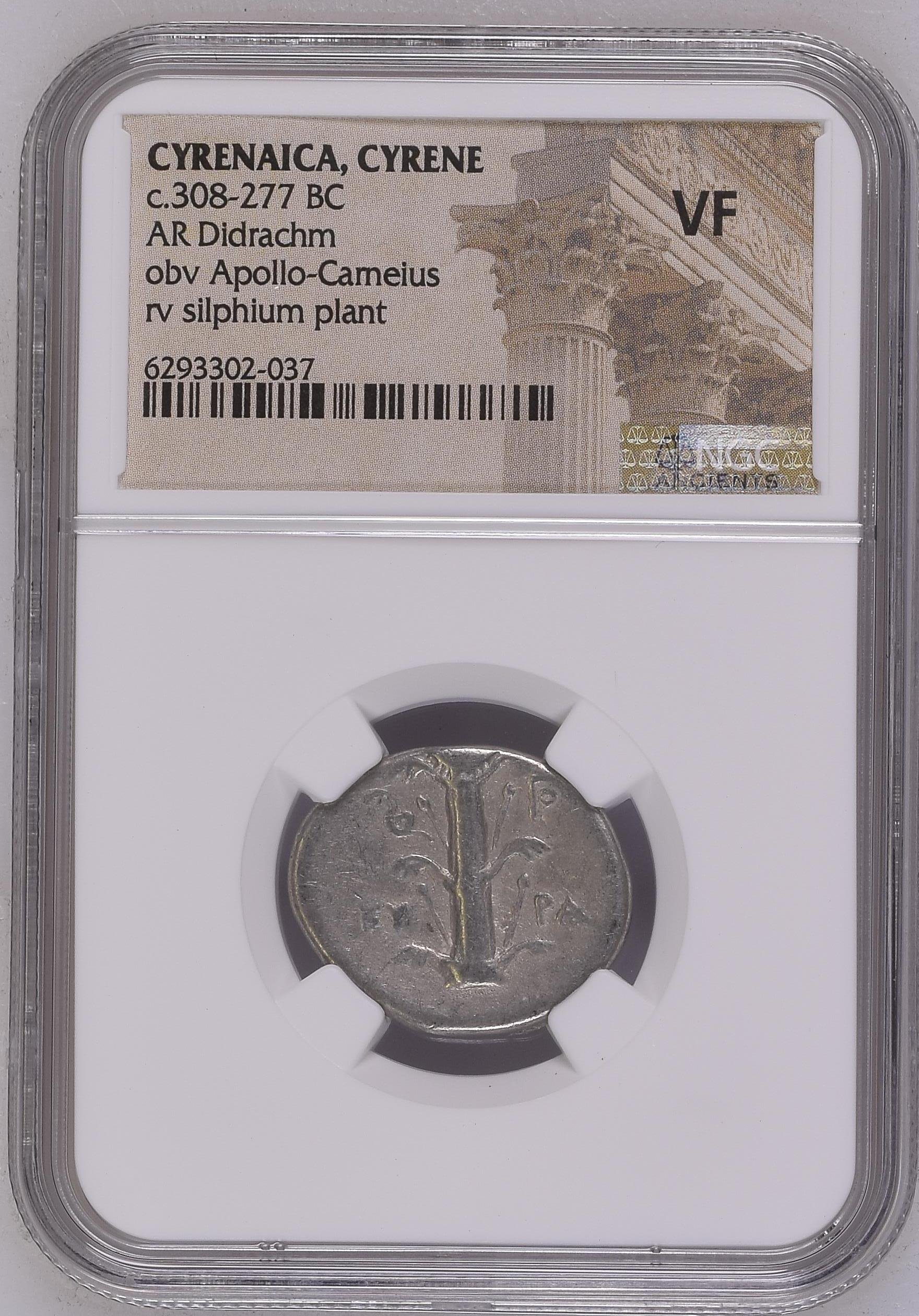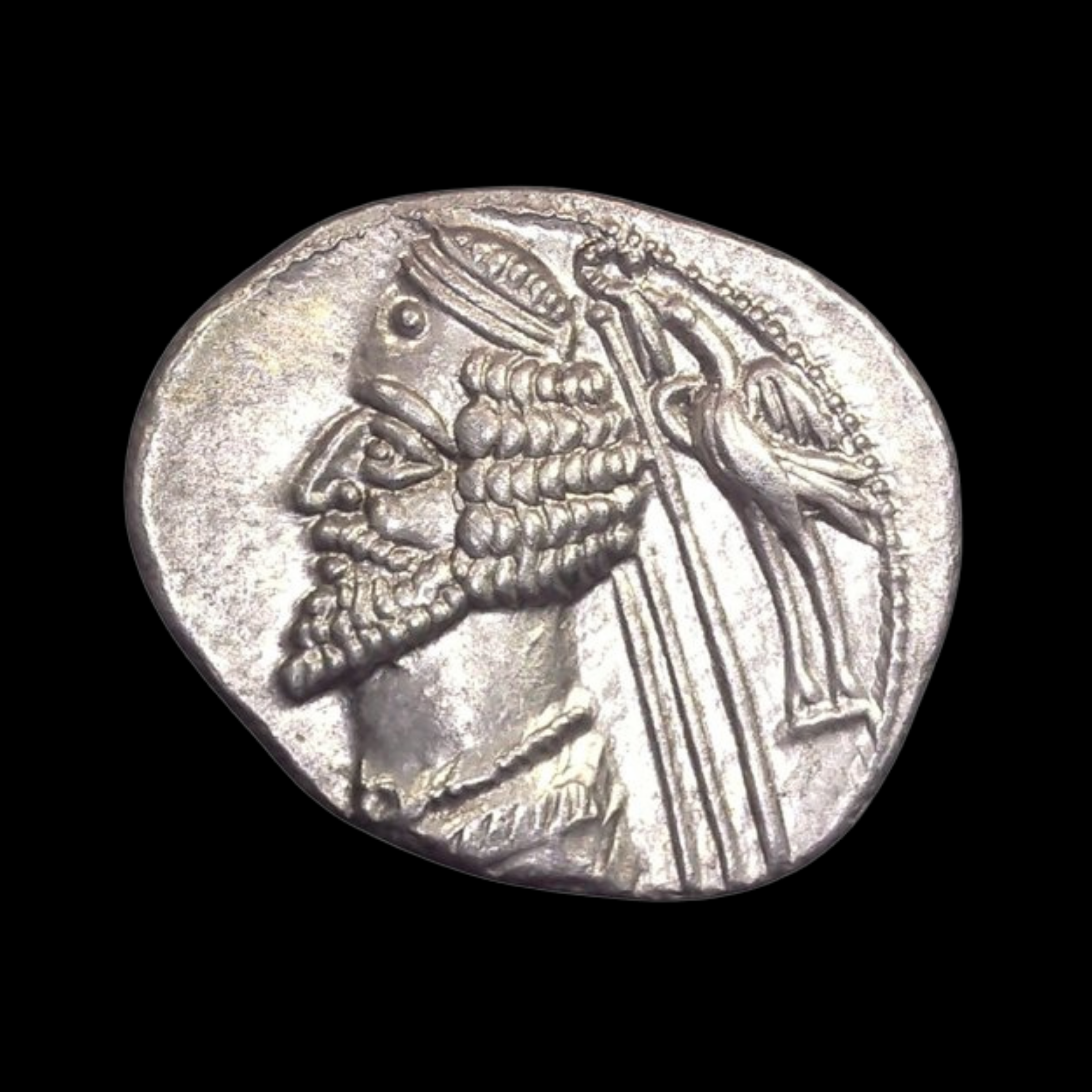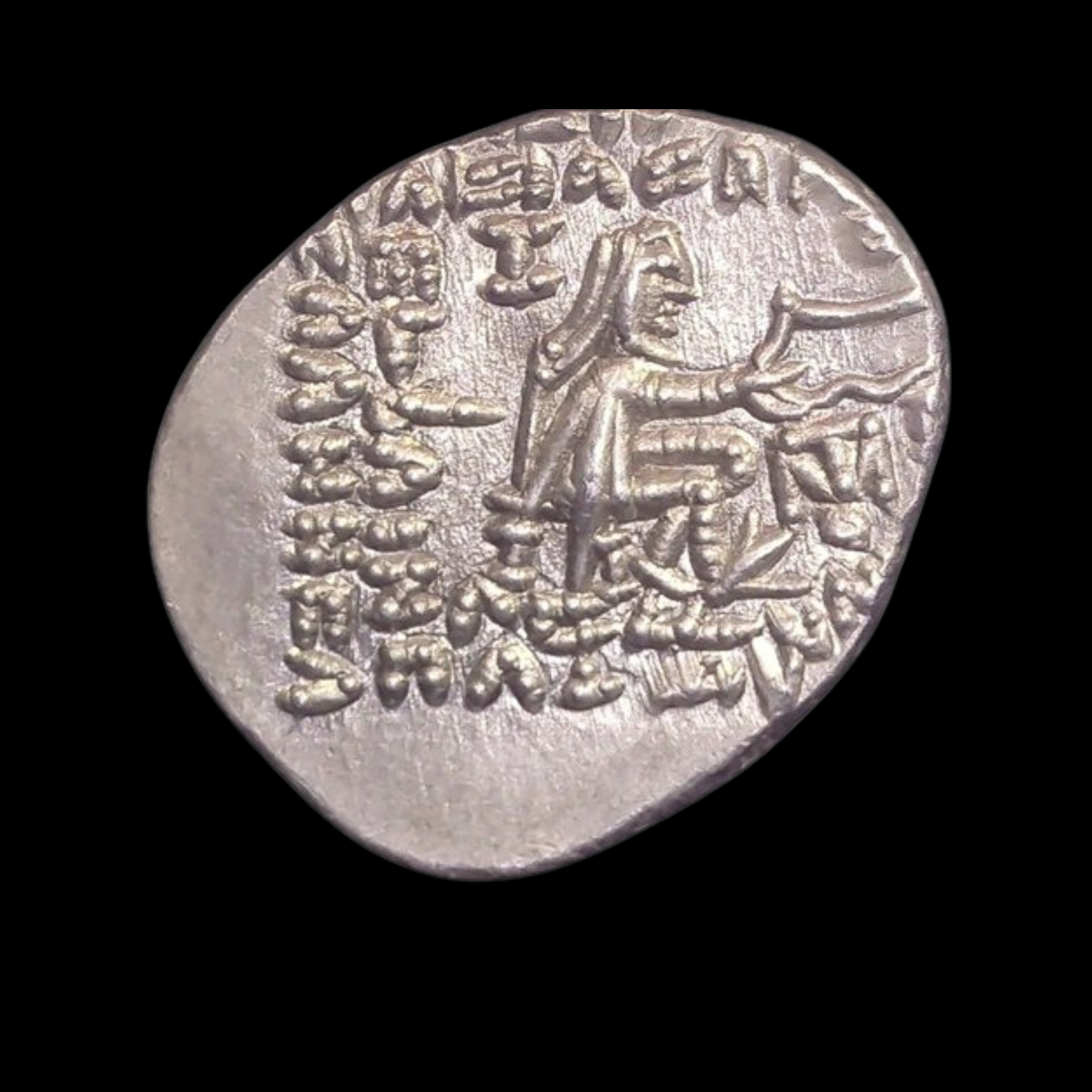 Image 1 of 2
Image 1 of 2

 Image 2 of 2
Image 2 of 2



Nymph of Histiaea Tetrobol (2,200 years ago)
This silver coin was minted in the ancient city of Histiaea on the island of Euboea (modern Greece). It represents one of the important civic coinages produced in the Hellenistic Greek world before Roman domination of the region.
Coin Description:
Front side: Portrait of the Nymph Histiaea wearing a decorative wreath made of branches and grape clusters
Back side: Inscription "IETIAI - EQN" with a depiction of the nymph, likely representing the city's patron deity
Technical Details:
Material composition: Silver
Denomination: Tetrobol (worth four obols, a medium-value coin in ancient Greek monetary systems)
Reference number: BM-56
Weight: 2.27 grams
Date of minting: 3rd century BCE until 146 BCE
Historical Significance:
This coin was produced in Histiaea, an important city on Euboea (eastern Greece), during the final period of Greek independence before complete Roman control. The tetrobol represented significant purchasing power in daily commerce, equivalent to roughly half a day's wages for skilled labor. The coin's production ceased around 146 BCE when Rome definitively established control over Greece, marking the end of independent Greek civic coinage in many regions.
This silver coin was minted in the ancient city of Histiaea on the island of Euboea (modern Greece). It represents one of the important civic coinages produced in the Hellenistic Greek world before Roman domination of the region.
Coin Description:
Front side: Portrait of the Nymph Histiaea wearing a decorative wreath made of branches and grape clusters
Back side: Inscription "IETIAI - EQN" with a depiction of the nymph, likely representing the city's patron deity
Technical Details:
Material composition: Silver
Denomination: Tetrobol (worth four obols, a medium-value coin in ancient Greek monetary systems)
Reference number: BM-56
Weight: 2.27 grams
Date of minting: 3rd century BCE until 146 BCE
Historical Significance:
This coin was produced in Histiaea, an important city on Euboea (eastern Greece), during the final period of Greek independence before complete Roman control. The tetrobol represented significant purchasing power in daily commerce, equivalent to roughly half a day's wages for skilled labor. The coin's production ceased around 146 BCE when Rome definitively established control over Greece, marking the end of independent Greek civic coinage in many regions.
This silver coin was minted in the ancient city of Histiaea on the island of Euboea (modern Greece). It represents one of the important civic coinages produced in the Hellenistic Greek world before Roman domination of the region.
Coin Description:
Front side: Portrait of the Nymph Histiaea wearing a decorative wreath made of branches and grape clusters
Back side: Inscription "IETIAI - EQN" with a depiction of the nymph, likely representing the city's patron deity
Technical Details:
Material composition: Silver
Denomination: Tetrobol (worth four obols, a medium-value coin in ancient Greek monetary systems)
Reference number: BM-56
Weight: 2.27 grams
Date of minting: 3rd century BCE until 146 BCE
Historical Significance:
This coin was produced in Histiaea, an important city on Euboea (eastern Greece), during the final period of Greek independence before complete Roman control. The tetrobol represented significant purchasing power in daily commerce, equivalent to roughly half a day's wages for skilled labor. The coin's production ceased around 146 BCE when Rome definitively established control over Greece, marking the end of independent Greek civic coinage in many regions.
IΣTI / AIEΩN
Oreus or Oreos (Ancient Greek: Ὠρεός, romanized: Ōreos), prior to the 5th century BC called Histiaea or Histiaia (Ἱστίαια), also Hestiaea or Hestiaia (Ἑστίαια), was a town near the north coast of ancient Euboea, situated upon the river Callas, at the foot of Mount Telethrium, and opposite Antron on the Thessalian coast. From this town the whole northern extremity of Euboea was named Histiaeotis (Ἱστιαιῶτις, Ionic Greek: Ἱστιαιῆτις[1]) According to some it was a colony from the Attic deme of Histiaea;[2] according to others it was founded by the Thessalian Perrhaebi.[3] Another foundation story had it that the name Histiaea is said to derive from the mythical figure Histiaea, the daughter of Hyrieus.[4][5] It was one of the most ancient of the Euboean cities. It occurs in the Catalogue of Ships in the Iliad, where Homer gives it the epithet of πολυστάφυλος (rich in grapes);[6] and the Periplus of Pseudo-Scylax mentions it as one of the four cities of Euboea.[7] It was an important city in classical antiquity due to its strategic location at the entrance of the North Euboean Gulf, in the middle of a large and fertile plain.[8]
After the Battle of Artemisium (480 BC), when the Grecian fleet sailed southwards, Histiaea was occupied by the Persians.[1] Upon the expulsion of the Persians from Greece, Histiaea, with the other Euboean towns, became subject to Attica. In the revolt of Euboea from Athens in 446 BC, we may conclude that Histiaea took a prominent part, since Pericles, upon the reduction of the island, expelled the inhabitants from the city, and peopled it with 2000 Athenian colonists. The expelled Histiaeans were said by Theopompus to have withdrawn to Macedonia, or by Strabo to Thessaly thence they transferred the name Histiaeotis.[9][10][11][12] From this time we find the name of the town changed to Oreus, which was originally a deme dependent upon Histiaea.[13] It is true that Thucydides upon one occasion subsequently calls the town by its ancient name;[14] but he speaks of it as Oreus, in relating the second revolt of Euboea in 411 BC, where he says that it was the only town in the island that remained faithful to Athens.[15] Its territory was called Oria (Ὡρία).[16]










